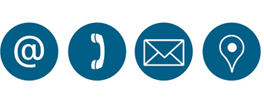Having bleeding kits in your business offers numerous benefits that enhance safety and preparedness. Here are some key advantages:
1. Immediate First Aid Response
Quick Access: Bleeding kits provide immediate supplies to address severe bleeding, which can be critical in emergencies.
2. Injury Mitigation
Reduced Severity: Prompt application of the right materials can help control bleeding, potentially saving lives and minimizing the severity of injuries.
3. Compliance with Regulations
Health and Safety Standards: Many workplaces are required to have first aid supplies. Bleeding kits help ensure compliance with occupational health regulations.
4. Employee Confidence and Morale
Safety Assurance: Knowing that effective first aid supplies are readily available can boost employee morale and confidence in workplace safety.
5. Training Opportunities
Skill Development: Having a bleeding kit can encourage training in first aid and emergency response, fostering a culture of safety among employees.
6. Risk Management
Liability Reduction: Preparedness can help mitigate risks and reduce potential liability in the event of an accident or injury.
7. Enhanced Reputation
Customer Trust: Businesses that prioritize safety are often viewed more favorably by clients and customers, improving overall reputation.
8. Emergency Preparedness
Comprehensive Safety Plan: Bleeding kits are an essential component of an overall emergency response plan, ensuring readiness for various incidents.
9. Community Responsibility
Support for Guests: Providing first aid resources shows responsibility not only for employees but also for guests and visitors.
10. Regular Maintenance
Ongoing Safety Culture: The need to regularly check and maintain the kits reinforces a culture of safety and preparedness within the organization.

1. AED Device
The main defibrillator unit, which is designed to analyze heart rhythms and deliver an electric shock if necessary.
2. Adult and Pediatric Pads
Electrodes that attach to the patient’s chest. Many AEDs come with both adult and pediatric pads, or pads that can be used for both.
3. User Instructions
Clear, step-by-step instructions for operating the AED, often available in multiple languages. Some cabinets also include visual guides.
4. CPR Mask
A barrier device to provide rescue breaths safely during CPR.
5. Gloves
Disposable latex or nitrile gloves to protect the responder during a medical emergency.
6. Scissors
For cutting clothing to access the chest if necessary.
7. Alcohol Wipes
For cleaning the area where the pads will be placed, ensuring good adhesion.
8. Emergency Contact Information
Instructions on who to contact for emergency services and internal emergency protocols.
9. Signage
Clear signs indicating the location of the cabinet and instructions for use, often featuring bright colors for visibility.
10. Battery and Maintenance Log
Some cabinets include a log to track the maintenance and checks of the AED, including battery replacement and pad expiration dates.
Considerations for Installation:
Accessibility: Ensure the cabinet is easily accessible to both staff and guests.
Visibility: Use bright colors and clear signage to mark the location of the AED cabinet.
Regular Checks: Implement a routine for checking the contents of the cabinet to ensure everything is stocked and functional
Installing bleeding kits in hotels is a proactive step toward ensuring guest and staff safety. Here are some key considerations and steps for implementation:
1. Assess Risk Areas
Identify high-risk areas such as kitchens, pools, gyms, and event spaces where injuries are more likely to occur.
2. Choose Appropriate Kits
Select bleeding kits that are suitable for your hotel's needs. Consider including items like tourniquets, sterile dressings, and gloves.
3. Strategic Placement
Position kits in easily accessible areas, clearly marked for visibility. Consider locations like:
Reception desks
Housekeeping areas
Employee break rooms
Near first aid stations
4. Training Staff
Provide training for staff on how to use the kits effectively. This can include:
Basic first aid training. We provide free CPR training






